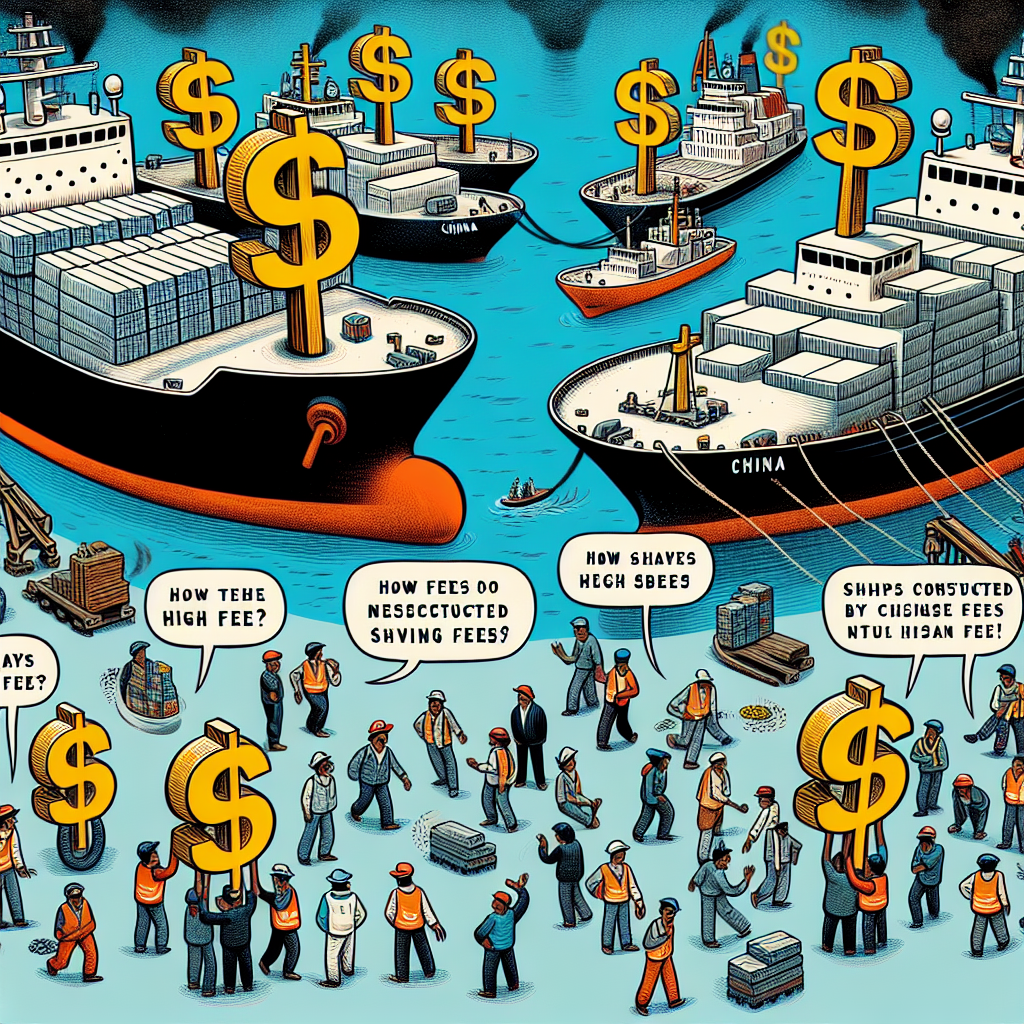The Office of the United States Trade Representative (USTR) recently announced measures targeting Chinese-owned and operated vessels by imposing high port fees. Ships constructed in China but not operated by Chinese entities will face slightly lower fees. The goal of the Trump administration is to curb the expansion of the Chinese Communist Party in maritime activities while boosting domestic shipbuilding in the United States.
According to data from Clarkson Research, the world’s largest shipbroking firm, China’s shipping order capacity recently reached 250 million deadweight tons (DWT), while the United States is at only 200,000 tons. A survey conducted under the Biden administration last March found unfair trade practices in the maritime, logistics, and shipbuilding sectors in China.
In response, President Trump signed an executive order directing then-White House National Security Advisor Mike Waltz and relevant agencies to develop plans to revitalize the domestic shipbuilding industry and maritime employment in the United States.
On April 17, the USTR announced that substantial fees will be imposed on Chinese-built commercial vessels operating in the US, with even higher fees for super tankers made in China.
The first type of port fees apply to vessels owned and operated by Chinese shipowners and operators. Beginning on October 14, a fee of $50 per net ton will be charged per voyage to the US, increasing by $30 annually over the next three years and reaching $140 per net ton by April 2028.
The second type of port fees apply to vessels constructed in China but not operated by Chinese entities, charged based on net tonnage or container quantity. Starting October 14, the fees are $18 per net ton or $120 per container (whichever is higher), with an annual increase of $5 per net ton or a proportional increase in container fees over the next three years. Some exemptions may apply to these vessels.
The USTR stated that port fees will be levied per voyage to the US, not for each US port visited, with a maximum of five times per ship per year.
According to Bloomberg, the following Chinese-built vessels are exempted from port fees:
1. Empty ships entering port (vessels carrying US export cargoes).
2. Vessels with capacity less than or equal to 4,000 twenty-foot equivalent units (TEU), 55,000 deadweight tons, or with a single bulk capacity of 80,000 deadweight tons.
3. Ships sailing from foreign ports or locations to US ports with a journey of less than 2,000 nautical miles.
Moreover, the USTR mentioned that operators can be exempted from port fees for Chinese-built vessels for up to three years by providing proof of purchasing American-made ships.
Clarkson Research highlighted that though the port fees are substantial, the vast majority of ships docking at US ports will not be affected. Analysis of last year’s shipping data indicated that only 7% of international trade ships would be subject to port fees, but for automobile transport vessels, this figure approaches 50%.
Nevertheless, for affected vessels, the costs are significant. The Clarkson Research report indicated that for a 10,000 TEU container ship built in China, the cost per voyage could be $1.3 million in 2026, rising to $1.9 million by 2028.
Estimates from Arrow Shipbroking Group suggest that overall, considering exceptions and waivers, the severity of the new taxes is lower than previously expected. However, the institution stated, “The new taxes still have the potential to impose a heavy burden on shipping companies, particularly Chinese shipowners.”
The USTR pointed out that over the years, the Chinese government has intentionally established dominance in the maritime, logistics, and shipbuilding industries through subsidy policies and industrial control, damaging US commercial interests, weakening the competitiveness of market-oriented enterprises, and posing risks to supply chain security. According to data from the Center for Strategic and International Studies (CSIS), China currently possesses approximately one-fifth of the global commercial fleet and accounts for over half (53%) of the world’s commercial shipbuilding capacity, surpassing the total of all other countries combined.

